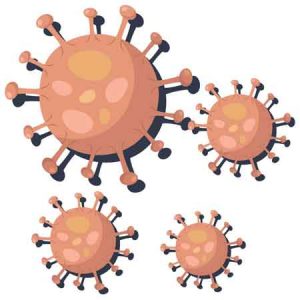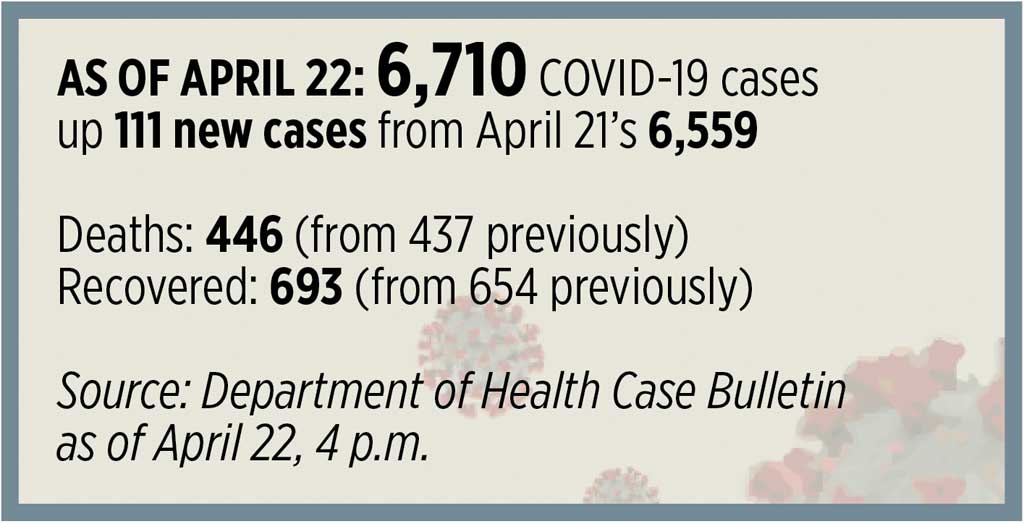By The Ateneo de Manila Department of Political Science
Part 6 of an eight-part series

RECENT POLITICAL EVENTS such as Trump’s withdrawal of US funding for the World Health Organization (WHO) on April 14 and the challenges raised against the legitimacy of the Tedros Adhanom-led WHO obstruct collective action on the pandemic. Nonetheless, they must be addressed if the global governance of health is to succeed in this time of crisis.
Undeniably, the WHO is vested with the key role of monitoring the pandemic preparedness of national public health systems through surveillance, detection, and response (IHR 2005). However, the United Nations (UN) system must be viewed as only one of the myriads of mechanisms responsible for global governance. In terms of the WHO, its soft authority is reinforced mainly by the domestic states’ execution of core capacities mentioned above and by a large extent, donor funding.
A framework based on global governance, thus opens up to the analysis of the role of a plurality of other agents, beyond the WHO, in shaping the processes and outcomes of governance of health at the time of the COVID-19 pandemic.
BEYOND THE WHO: DEFINING GLOBAL GOVERNANCE
James N. Rosenau’s (1995; 2009) global governance framework provides for an understanding of the range of actors, scale, intensity, and complexity of interactions that characterize governance at the global level.
Globalization sets the context of global governance, with technological change playing a key role in linking actors and processes to economic and cultural interdependencies and asymmetries. Through global trade, actor-sensitivity and vulnerability to external shocks is heightened. Media and travel act as globalization agents that blur physical distances and geographies and further the conflation of the local with the global.
Decentralized and interconnected settings thus set the platform for the participation of actors other than the state. Non-state actors (NSA) such as NGOs, transnational corporations (TNCs), social movements, civil society organizations, citizen groups, etc. act as the “steering mechanisms of governance.” As opposed to a “command” center that typically describes central domestic authority, steerers are self-regulating and may be autonomous from the state. Credible and as capacitated as states and their national governments, specific NSAs shape and create rules by iterating practices and customs, internalizing (or opposing) norms and institutionalizing regimes through enforcement or contestation.
FIRST PHASE: FROM PUBLIC HEALTH EMERGENCY TO A PANDEMIC
It has become evident in the 21st century, that with the occurrences of SARS in 2003, swine flu in 2009, Ebola virus in 2014, and Zika virus in 2016, globalization serves as the “transmission belt” for propelling the spread of infectious diseases.
In early January, the WHO collaborated with regional and country offices to respond to the outbreak in Wuhan, China. On Jan. 30, it declared the outbreak a Public Health Emergency of International Concern (PHEIC). By March 11, as the virus spread outside of China, WHO announced the COVID-19 pandemic (WHO 2020).
Succeeding responses of actors to WHO’s pronouncements marked the first phase of global health governance in the context of COVID-19. Referred by Steven and Evans (2020) as the “public health emergency” phase, this foremost “layer” includes the containment and suppression measures taken by China to respond to the outbreak at epicenters in Wuhan city and Hubei province. Due to their proximity at source, the subsequent responses of China’s neighbors, Hong Kong, Taiwan, and South Korea in January, were immediate and timely, permitting them to resort to pharmaceutically based interventions of testing and tracing, while averting the onerous lockdowns that was the result of China’s intransigence.
At the onset of the pandemic in Europe, cross-jurisdictional actors (such as states/ sub-states/regions/ multilateral/ scientific/ medical/ business) evolved a continuum of responses to interlocking objectives of global health governance at a time of crisis. The race to meet these objectives is shaped by “micro-macro” and “national-local” issues and dynamics: (i) flatten the pandemic curve; (ii) break the transmission chain; and, (iii) lessen the economic, social, and human rights impacts (WHO 2020).
Flattening the pandemic curve: lockdown, closures, and social restrictions
National-local government efforts based on lockdowns, quarantine, school closures, business stoppage, and border controls constitute worldwide responses to the pandemic.
While particular cases reflect strong-state coercion, as in the case of France, state-sponsored pandemic responses, in general, have been disjointed and at times unsynchronized with their subnational governments.
As recent events have shown, different governmental models posed as barriers to cohesive central-local action. In unitary systems, the Philippine Pasig City mayor was conflicted by the central government’s directive to implement a tricycle transport ban that prevented the mobility of the sick during the Luzon wide lockdown in March. Different courses of action taken by the regional governments in Italy — Veneto, which delivered mass testing, and Lombardy, which opted to delay it characterized the rather “quilted” approach to crisis management.
Other cases involving federal states are unique. In the US, it involves intra-state competition for popular mobilization. In Michigan, North Carolina, and Ohio, constituents have intensified their protest of social distancing policies enforced by their local governments. In the same vein, intra-executive agency competition for public support for social distancing has been the focus of the conflict between the President of Brazil, Jair Bolsonaro and his health minister.
BREAKING THE TRANSMISSION CHAIN: TEST AND TRACE, ACCESS TO MEDICAL SERVICES, AND HOSPITAL CARE
While the WHO recommends social distancing, it highly enjoins the state and private actors to carry out testing for COVID-19. It attempts to narrow down the testing gaps between developed and developing countries by collaborating with companies to ensure the supply of testing kits. Increasing forms of TNC collaborations with governments have also supplanted WHO’s efforts. These global actors have penetrated the production of testing kits as well as the construction of makeshift hospitals for additional beds. Central and sub-national governments have played key roles in converting big venues to makeshift lying in beds as shown in the practices of New York City, the Philippines, through the Department of Public Works and Highways (DPWH) and Wuhan, the site of massive fangcang shelter hospitals.
LESSENING OVERLAPPING HEALTH, ECONOMIC, SOCIAL, AND HUMAN RIGHTS IMPACTS
Globally, public and private actors have had to address the “second order” consequences of quarantine measures and of travel bans on vulnerable sectors. Transnational civil society actors have called governments to confront the human rights dimensions of confinement, specifically police brutality and the issues of unequal medical, food, water and sanitation access that impact on the vulnerable in developed and developing countries.
Actions vary particularly at the scale with which states and regional groupings have chosen to allocate their resources. At the lead is the US, with $2 trillion worth of economic stimulus for individuals/ families, small/ big businesses, public services and subnational governments. The EU’s “rescue plans” have been contingent on the individual EU state provisions for safety nets. In Asia and the Pacific, governments have committed to extend fiscal support for SMEs, wage support for workers, and subsidies for the affected services sectors of tourism, civil aviation, and food. Additionally, ASEAN+3’s resolve to protect regional job security is conditional to the region’s continuing trade and business (UNESCAP 2020).
THE CHALLENGES OF GOVERNING THE “SECOND PHASE”
The practices that actors have evolved to respond to the crucial first phase of the pandemic will definitely shape the governance of the “second phase” (Steven and Evans 2020). Largely unknown, it is predicated on when the virus plateaus and on when infection rates decline across places, globally. How this phase unfolds, though will not be consistent across sectors and jurisdictions.
Governing health during “post lockdown” will be as demanding. Enrique Dans (Forbes 2020) asserts: “From now on, we must prepare for life in a world where a vaccine for COVID-19 is going to take a long time to arrive…”
What may be certain is how actors mark the beginning of their post lockdown histories, incorporating and embedding practices such as “security distancing,” mask wearing, rapid testing, as well the arrangements for remote working and online learning, that have contributed to global health objectives during this period of crisis.
Forward steps should include rule creation and implementation of the hard lessons learnt due to limited pandemic preparedness, particularly the need to scale up government capacity for testing, contract tracing and treatment of confirmed cases.
This period will require the strengthening of practices that bridge worldwide divides in basic needs and health access and in digital and information technologies.
As we know it to be true by now, the SARS epidemic experience has helped East Asia to redefine understandings of what matters most for their people’s health security and personal safety. The emergent norms of the COVID-19 pandemic response should help us to reconstruct the ideas and practices that should define an equitable and just global health governance.
Previous columns in this series can be accessed here:
• https://www.bworldonline.com/politics-and-crisis-a-discussion-series-framing-the-crisis-conversation/
• https://www.bworldonline.com/politics-and-crisis-a-discussion-series-governing-the-pandemic/
• https://www.bworldonline.com/politics-and-crisis-a-discussion-series-power-from-below-social-policy-for-the-people-by-the-people/
• https://www.bworldonline.com/politics-and-crisis-a-discussion-series-re-imagining-asean-in-a-time-of-crisis/
• https://www.bworldonline.com/politics-and-crisis-a-discussion-series-covid-19-lessons-in-east-asia-the-good-the-bad-and-whats-just-right/





